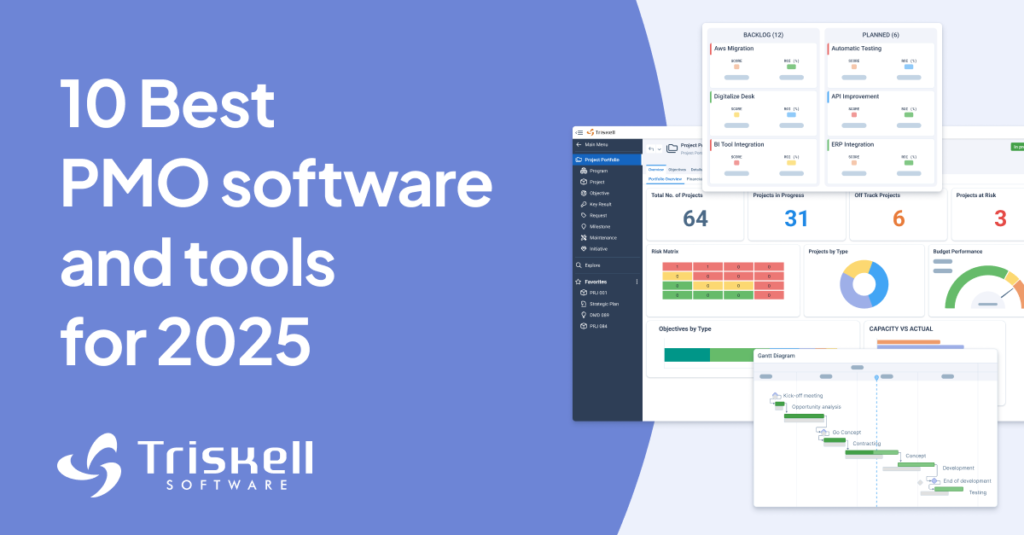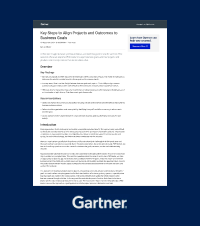5 best practices for effective strategy execution for organizational success

Implementing a successful strategy is a complex task that involves myriad decisions made daily by employees, influenced by the information at their disposal and their individual motivations. The efficacy of these strategies lies not just in their planning and design but in the meticulous tracking, management, influence, and adoption that follows.
In this exploration of strategy execution best practices, we uncover the key traits essential for organizational success.
What is strategy execution? A brief definition
What is strategy execution? Strategy execution is the result of thousands of decisions made every day by employees acting according to the information they have and their own self-interest. It is planned, designed and acted upon, but must be tracked, managed, influenced and adopted in order to be successful.
Key traits of effective strategy execution
What actions or traits are most effective in enabling an organization to implement strategy? There are actually dozens of key traits, but here we will focus on five of the most important and they generally focus on – not surprisingly decision rights and information flow just as decision making and communication are at the very core of every project’s success factors. Let’s examine these five key traits…
1. Everyone generally knows what they are supposed to do as part of the execution
Blurring of decision rights tends to occur as a company matures. Young organizations are generally too busy getting things done to define roles and responsibilities clearly at startup.
In a small company, it’s not very difficult to know what everyone is doing so this is logically not so important. But as the company grows, executives come and go, bringing in with them and taking away different expectations, and over time the approval process gets blurred and processes in general can become grey.
It becomes increasingly unclear where one person’s accountability begins and another’s ends. So, ensuring everyone is on the same page with expected actions and responsibilities becomes more critical.

STRATEGIC PORTFOLIO MANAGEMENT
Elevate your PMO above the rest
Discover how PMOs can leverage Triskell capabilities
2. Key information is shared effectively and in a timely manner with leadership
Headquarters can serve a powerful function in identifying patterns and spreading best practices throughout various business units and geographic locations.
But it can play this coordinating role only if it has accurate and up-to-date market intelligence. Otherwise, it will tend to impose its own agenda and policies rather than defer to operations that are much closer to the customer. Thus, sharing information is logically important to success.
3. Decisions are not second-guessed
Whether someone is second-guessing depends on the vantage point. A more senior and broader enterprise perspective can add value to a decision, but managers up the line may not be adding incremental value; instead, they may be stalling progress by redoing their subordinates’ jobs while, in effect, shirking their own responsibilities.
Delegation must happen and decisions need to be trusted or progress can quickly stall, and the big picture is forgotten.
WHITE PAPER
Is a PMO the Right Strategic Plan?
4. Organizational boundaries do not inhibit information flow
Generally, this isn’t a big issue, but as markets and industries became more competitive, the lack of proper communication between departments and teams can lead to a fragmented and frustrating customer experience, resulting in lost trust, decreased customer satisfaction, and potential financial losses for the company.
The solution, however, isn’t very complicated – basically just getting different groups to talk to each other (remember, communication is key). For example, the customer division may become responsible for issuing regular reports to the product units showing performance against targets, by product and geographic region.
A standing performance-management meeting can be installed on the schedule, say, every quarter, creating a forum for exchanging information face-to-face and discussing outstanding issues. These moves bred the broader organizational trust required for collaboration.
5. Employees have the necessary information to understand the impact of their decisions and actions
Rational decisions are necessarily bounded by the information available to employees. If managers don’t understand what it will cost to capture an incremental dollar in revenue, they will always pursue the incremental revenue. They can hardly be faulted, even if their decision is basically the wrong move to make.
Going after the dollar without knowing the costs is a bad choice and an ignorant choice. Information availability is key to good decision making.
SUBSCRIBE TO OUR NEWSLETTER
Get stories like this in your inbox
Conclusion
The bottom line here is that successful strategy execution is reliant on effective decision making, proper and timely information flow, and the ability to own decision making responsibilities for those involved in the process. Not all strategies work and not all executions are successful, but following these traits and logical best practices will significantly enhance your chances of success in the dynamic landscape of organizational strategy execution.
Request a demo of Triskell Software
Triskell meets all the requirements for your organization’s PMO to take a step forward in aligning your project portfolio with strategic planning.

Related Content

Best PMO software and tools for 2025: the ultimate guide
Explore and compare the best PMO software for project management, resource allocation, and strategic alignment, all in one guide.

Why SAFe needs true Portfolio Management
Uncover the game-changer for SAFe success! Revolutionize your strategy with True Portfolio Management. Boost efficiency, drive results.

PMO success factors: how to make an extraordinary PMO
Unlock PMO success with these game-changing factors! Discover proven strategies for Project Management Office triumph.
FAQs about Best practices for strategy execution
What role does organizational culture play in effective strategy execution?
Organizational culture significantly impacts strategy execution. A culture that promotes transparency, collaboration, and accountability can enhance the execution of strategies by ensuring that everyone is aligned and motivated.
Cultivating a culture that supports open communication and continuous learning helps employees understand their roles in the strategy and fosters a sense of ownership and commitment.
How can organizations ensure that strategy execution is adaptable to changing market conditions?
To ensure adaptability, organizations should implement a flexible strategy execution framework that allows for adjustments as market conditions change.
Regularly reviewing and updating strategic plans based on market trends, customer feedback, and competitive analysis can help organizations stay relevant.
Encouraging a culture of agility and continuous improvement will also enable teams to respond swiftly to new challenges and opportunities.
How can technology support strategy execution in an organization?
Technology can support strategy execution by providing tools for project portfolio management, data analysis, and communication.
- Implementing PPM software helps track progress and manage resources effectively.
- Data analytics tools can offer insights into performance and trends.
- Communication platforms facilitate timely information sharing and collaboration across teams.
Leveraging technology can streamline processes and improve overall efficiency in executing strategies.

